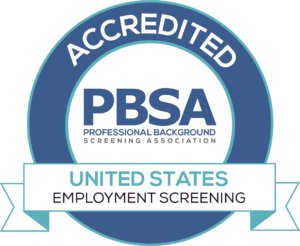There are a number of federal laws that work to define immigration policy in the U.S. Such laws include:
- Immigration and Nationality Act (INA)
- Immigration Reform and Control Act (IRCA)
- Immigration Act of 1990
- Illegal Immigration Reform and Immigrant Responsibility ACT (IIRIRA)
Employment opportunities and immigration have long been intermingled, especially in the United States. Because of this, a number of the provisions within the immigration laws above outline specific employer sanctions and responsibilities.
It’s important to note that these laws have also come to prohibit employment discrimination based on citizenship, immigration status, and national origin of authorized immigrant workers.
However, it is every U.S. employer’s responsibility to ensure that the individuals they hire to perform work on behalf of their company are authorized to do so.
Form I-9 In a Nutshell
The function of the form I-9 is simple– to verify the identity and employment authorization of each individual hired for employment in the U.S. Here are some of the basics:
Who?
All employers must complete Form I-9 for their employees. They are not required to collect and maintain Form I-9 for independent contractors.
What?
Form I-9, also known as the Employment Eligibility Verification form, is a document issued by the Department of Homeland Security (U.S. Citizenship and Immigration Services Division). There are two main sections of the form:
- Section 1: Employee Information and Attestation
- Section 2: Employer or Authorized Representative Review and Verification
When?
Employers are required to complete and sign section 2 of form I-9 within 3 business days of the employee’s date of hire.
Section 2 can also be completed after the employee accepts a position but before employment formally begins (i.e. before they become entitled to wages or remuneration). However, the date entered on the form needs to match the date formal employment is to begin.
Why?
The purpose of Form I-9 is to discourage the hiring of individuals not authorized to work in the U.S. while mitigating discrimination against work-authorized immigrants.
How?
All new employees must provide identification documentation which the employer must verify within three days of hire. The Form I-9 must then be completed and archived.
The specific documents required from the employee are outlined on the form. Additional information can be found in section M-274 of the Handbook for Employers.
Employer Responsibilities
To summarize what was outlined above, here are the three primary employer responsibilities concerning Form I-9.
- Form I-9 must be completed for every new employee. A form I-9 is not required for independent contractors.
- Employers must complete section 2 of this form within three business days of the employee’s official start date.
- All Form I-9 documents must be maintained for three years after the date of hire or one year after the date employment ends– whichever is later. These documents can be maintained on paper or electronically.
Penalties for Noncompliance
Penalties can come in the form of civil fines, criminal charges, debarment from government contracts, and court orders to compensate individuals discriminated against.
Fines for Form I-9 noncompliance can be severe, maxing out at thousands of dollars per instance of error or omission.
According to U.S Citizenship and Immigration Services, the following civil and criminal violations include the following:
Civil Violations
- Knowingly hiring an unauthorized noncitizen in the U.S.
- To have knowingly continued to employ an unauthorized noncitizen in the U.S.
- Failing to properly comply with Form I-9 requirements
- Document fraud
- Discrimination against a work-authorized individual
- Failing to notify the DHS of a Final Non Confirmation of an employee’s employment eligibility
Criminal Violations
- Engaging in a pattern of hiring, recruiting or referring for a fee unauthorized noncitizens.
Give Your Process a Grade
The health of an organization’s I-9 process can be easily gauged given the answers to the following questions:
- Are all Form I-9 requirements and anti-discrimination laws clearly understood?
- Is there a defined process in place for completing required documentation on time?
- Is there a process in place to ensure proper maintenance of documentation?
- Can documents be easily located and retrieved if needed?
- Are all Form I-9 processes audited internally for compliance?
If the answer to one or more of these questions is ‘no’, then there is a higher risk of noncompliance, and therefore, room for process improvement.
Takeaways
Form I-9 compliance requires a bit of time and effort– but it’s the law. Some organizations handle their own I-9 processes while some elect to have third parties manage it for them– which can come with many advantages such as easy electronic data input and archiving.
Regardless of your I-9 management method, it is important to have a healthy process. That way you can ensure compliance with the law while building and maintaining your workforce.
Learn more about our Form I-9 management services.










